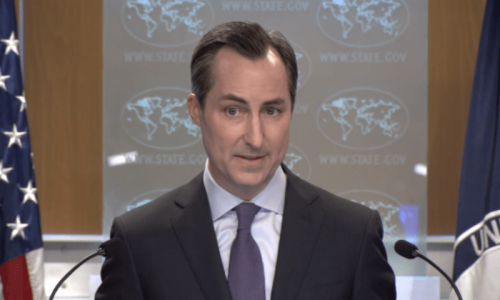
THE Supreme Court recently concluded that construction of the Diamer-Bhasha and Mohmand dams must begin immediately. Before so doing, one must ask if alternatives and input of critical evaluators with opposing viewpoints were considered.
It is difficult to know if a variety of alternatives were contemplated. The short order says that all those present in the court unanimously favoured building these two dams.
For decisions such as these, it is imperative that the opposing point of view, that does not favour building dams, is also considered, and that the relevant researchers, independent economists and experts on mega projects are called upon to give their opinion.
We need dams. But can we afford large dams the way we’re planning and executing them? To push for a more rational debate, evaluations of such large projects should be carried out under non-exploitative planning processes, and include cost-benefit analyses and the study of outcomes of similar past projects. The absence of these factors can cause hardships under the guise of development. An article published in April 2018 in the Economic & Political Weekly journal indicates that constructing dams while eschewing public debate and ignoring environmental and social factors may work against the welfare of a significant portion of the population.
The absence of rational planning can cause unintended hardships.
An earlier research paper, published by major infrastructure researchers at Oxford University, shows the deceptive planning processes and enormous costs and risks involved in building large dams. The comprehensive study relies on a sample of 245 dams built between 1934-2007 in 65 countries. The paper also addresses the schedule and budget overruns in the case of Diamer-Bhasha.
The authors of the Oxford report believe that policymakers exploit the planning process to overestimate benefits and underestimate costs of large dams. Two things enable this exploitation. First, planners are overly optimistic about costs and schedules because they don’t consider outcomes of similar past projects. Second, project promoters (politicians, lawyers, developers, consultants, etc) strategically misrepresent the facts because of misplaced incentives; they promote unfit projects (ostensibly for more work or votes).
The research findings show that three out of four large dams have enormous cost overruns; actual costs are on average 96 per cent higher than estimates. Moreover, overruns exceed proposed benefits to the point where the asset becomes stranded. More worrying is the fact that these cost estimates have not improved over time. Eight out of 10 large dams suffer schedule overruns, too.
According to the Oxford report, there is overwhelming evidence that implementation time frames are chronically underestimated. Moreover, projects in South Asia have the poorest schedule performances, which leave a dam project prone to environmental and geological risks, and to fluctuations in the price of imports, exchange rates, wages, interest rates and sovereign debt.
The estimated financial cost of Diamer-Bhasha is staggering (certain calculations may need revision if the scope of the dam has been amended as claimed by some news sources). It is also suggested that the dam’s benefit-to-cost ratio makes it an unprofitable investment, and we’re better off committing such a vast amount of money to smarter ventures.
Policies are proposed, including one to choose energy alternatives that have fewer site-specific characteristics (eg, unfavourable geology). The study cites a hydropower project in Brazil where weak geology ended up comprising 96pc of the base price. Recommendations include alternatives that rely on fewer imports and reduce exposure to currency fluctuations, citing a project in Colombia in which currency depreciation caused a 32pc cost overrun since half of the costs were covered by imported inputs. It is proposed that energy alternatives with short time frames are the best insurance against inflation. The study gives the example of dams in Argentina and Brazil where inflation caused massive overruns. Finally, alternatives are endorsed that don’t constitute such a large portion of a country’s balance sheet, citing various examples of large dams in different countries that increased external public debt exponentially.
Large dams also have a huge, detrimental and irreversible environmental impact. They threaten aquatic species and may even drive them to extinction. People are also displaced, with significant psychological and financial fallout.
It’s very hard to gauge the probability of success for projects over long timelines with great accuracy. The bigger the project, the more transparent and stringent its planning should be.
The ultimate accomplishment for posterity won’t be to roll the dice, but rather guard decision-making and planning processes against nepotism, biases, deception and exploitation.
The writer is a freelance contributor based in Lahore.
Twitter: @wyounas
Published in Dawn, July 11th, 2018












































